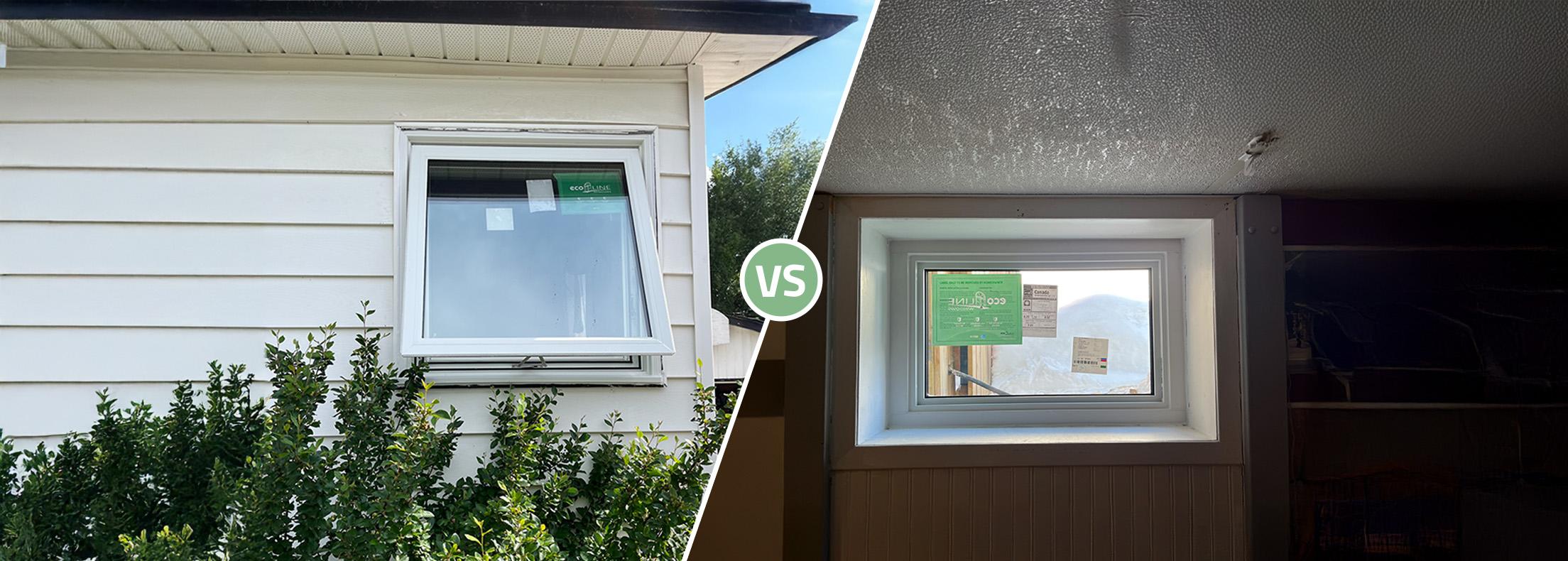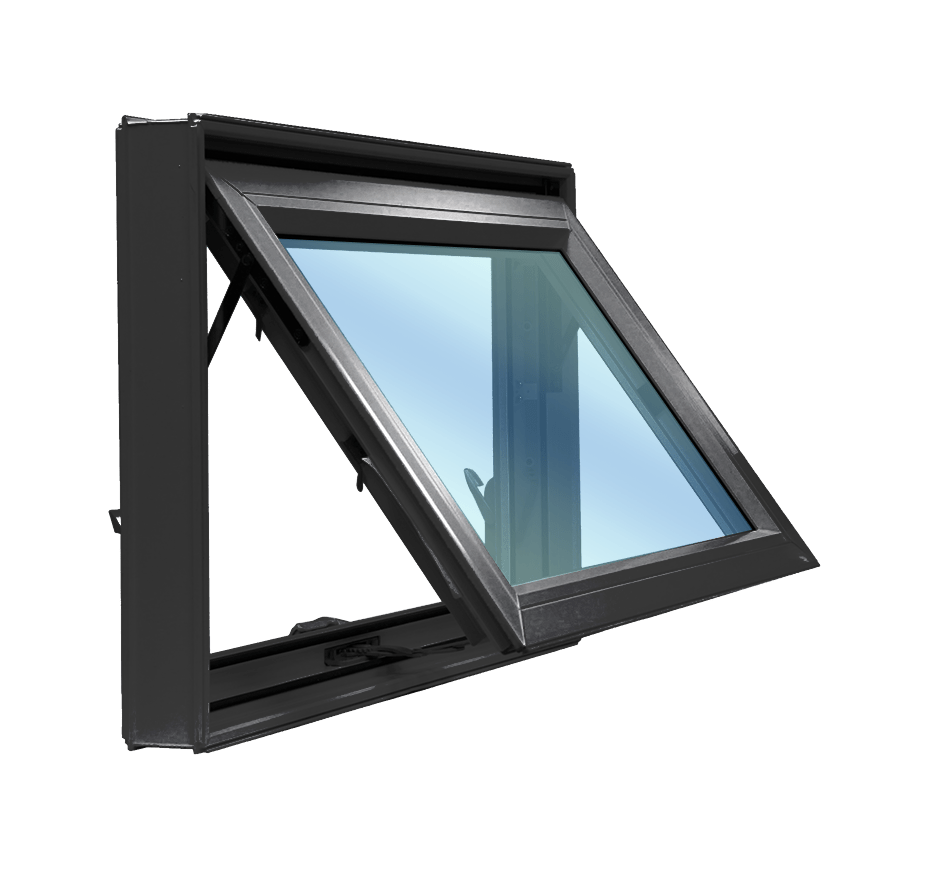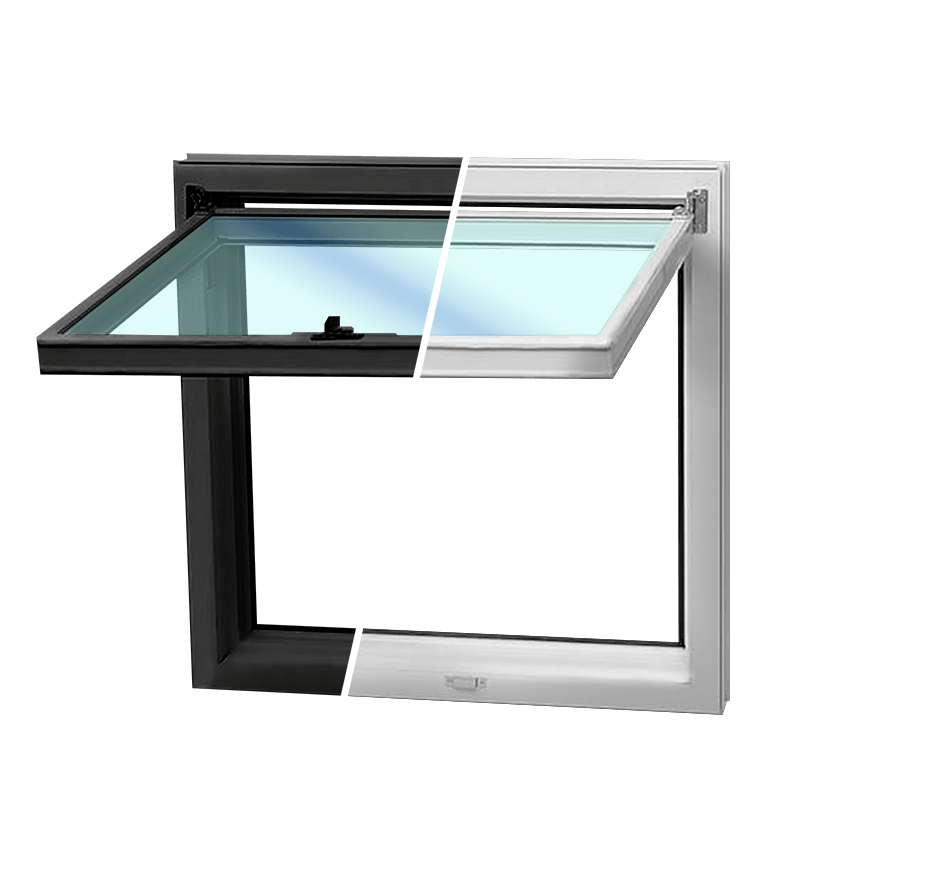

Hopper vs. Awning Window: Side-by-Side Comparison [2025]
Jan 23, 2025
5 min read
12761
Picking windows for each of the rooms in your house is a process that should go beyond the look of the product. The direction the windows are facing, the kind of room, and even which way the windows should open, are all important contributing factors to the levels of comfort, light, and ventilation your in your home.
We’ve previously discussed the idea of picking windows for the each side of the house, and for specific areas like the kitchen or basement. If you have begun looking at products from different companies, you’ll quickly notice that there are windows that often look similar but don’t always function the same way.
There are often big reasons behind why similar windows should open or function differently. Nowhere is this most evident as in the difference between hopper windows and awning windows.
While these units look nearly identical when they’re closed, the way they function often makes them ideal for very different places around the home. Let’s find out all the differences there are between these two popular window styles in Canada!
Awning vs Hopper Window: How They Operate
The most obvious difference between these two types of windows is the direction in which they open.
- In awning windows, the sash moves outward away from the house.
- In hopper windows, the sash moves inward.
Depending on the company or the brand of the windows, the sash in a hopper may open at the bottom or the top.
A big advantage of awning windows is that they can stay open in any weather, and keep the rain out of the house while letting fresh air in.
Hopper Window vs Awning Window: Energy Efficiency
Depending on the window manufacturer, there may be a very vast difference in the energy ratings, and therefore the performance of the two styles of windows. Like casement windows, awnings rely on a compression seal for maximum efficiency when the window is in the closed position. The seal eliminates the gap between the sash and frame, making it impenetrable to drafts and moisture.
Some hopper windows utilise the compression seal as well. In a lot of the cases, however, they rely on weatherstripping to fill up that space. Weatherstripping is a less efficient material, and therefore significantly reduces the energy rating of hopper windows.
All in all, awning windows are more energy-efficient than hoppers. However, this only applied to the case when homeowners compare both windows equipped with the same glass – double or triple-pane – and similar energy rating. Keep in mind, that the minimum ER for a window to be recognised as energy-efficient in Canada should be at least 34.
Awning and Hopper Windows: Hardware
Awning windows usually feature a crank mechanism with a fold down handle that operates the window. This makes it much easier to access and operate these units.
Hopper windows don’t have the same mechanical components for ease of operation. When the window opens upward, there is an automatic latch that locks the window in at around ninety degrees to keep it from closing. These types of units are usually opened by hand.
The weight of the sash is important when dealing with units that are operated manually. This is why hopper windows are usually only made in a double-pane option. Because of this, there is also a significantly smaller maximum size in which these kinds of windows can be made. As a result, they often end up being used in tight areas or basements, to provide extra ventilation.
Awning Window vs Hopper Window: Price Comparison
Both hopper and awning windows are priced similarly, with double-pane, medium-sized units typically ranging from $1168 to $1708. The final cost depends on several factors:
- Size and dimensions of the window
- Frame material
- Glass type and glazing options (double or triple-pane, low-E coatings)
- Colour scheme (painted models are usually more expensive compared to standard white units)
- Installation, etc
To get a more precise estimate based on your preferences and project specifics, use our Window Replacement Cost Calculator. This tool will help you explore different window prices and find the best option for your home.
Ideal Rooms to Use Awning and Hopper Windows
Although both of these windows look similar, they function very differently and depending on the manufacturer may have very different energy and performance ratings.
- Awning windows are ideal for larger spaces that benefit from ventilation throughout the year. Thanks to their top-hinge design, they can be opened even during light rain without allowing water in, making them perfect for kitchens and bathrooms. They’re also commonly used bedrooms, especially in homes that prioritise energy efficiency and airflow.
- On the other hand, hopper windows are better suited for smaller or hard-to-reach areas, such as basements, laundry rooms, or stairwells. These bottom-hinged windows open inward, providing efficient ventilation in tight spaces. Although they may not match the energy performance of triple-pane windows, hopper windows offer a cost-effective solution for areas where maximum efficiency isn’t the main priority.
1750 Coast Meridian Rd #102,
Port Coquitlam, BC V3C 6R8
100, 17866 106A Avenue,
Edmonton, AB, Canada,
T5S 1V3
3307 Dunmore Rd SE #12,
Medicine Hat, AB,
Canada, T1B 3R2
2081 Merivale Rd #201, Ottawa, ON, Canada, K2G 1G9
by appointment only
109 Ilsley Ave Unit #3, Dartmouth,
NS, Canada, B3B 1S8









